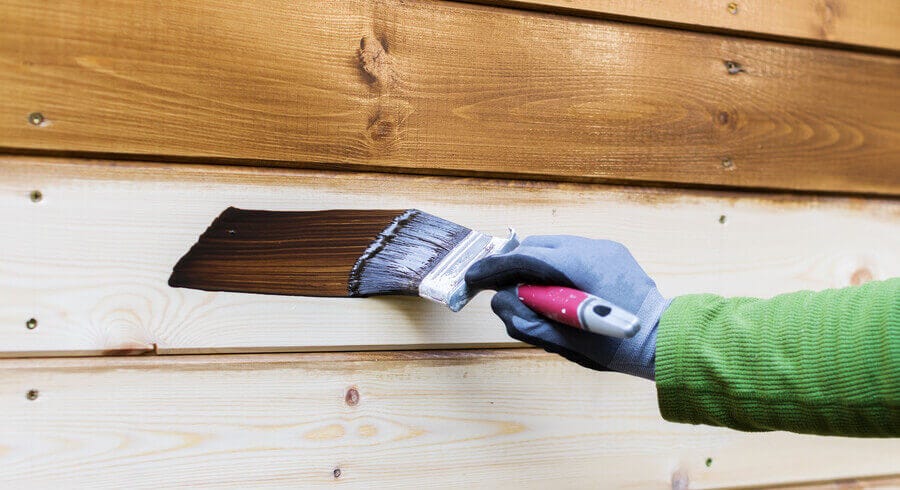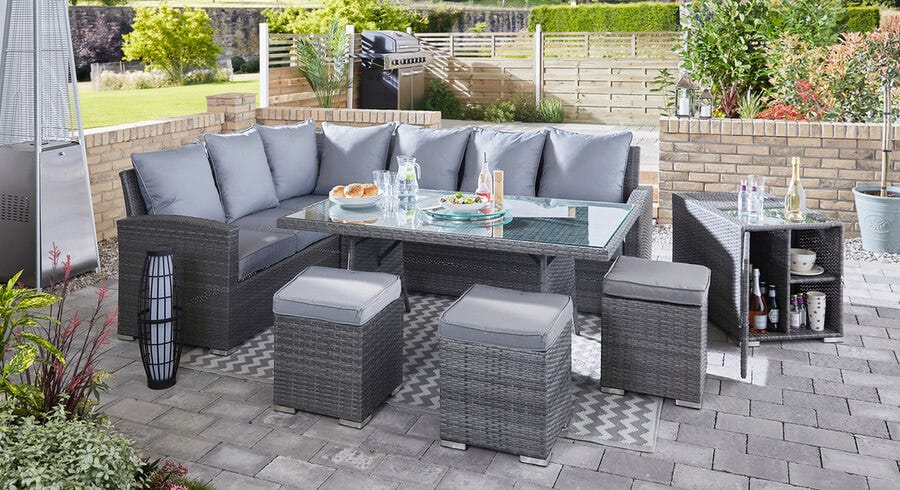How to Treat a Shed: A Step By Step Guide


Treating your wooden shed panels is crucial if you want your shed to look good and last for years to come. Garden sheds go through a lot, weathering storms, snow and sun, all of which can damage the wood and cause it to age and crack. This handy guide will cover the basics of how to treat a wooden shed, feature some of the best treatments for shed timber and detail the essentials of shed waterproofing.
Types of shed treatment
Before making a choice on which specific product to go for it’s worth checking whether your shed is constructed using overlap or tongue and groove cladding. Overlap designs are more permeable so benefit from spray-on preservatives, whereas the planed timber of a tongue and groove shed is less permeable so you’re better off with a spread treatment.
Shed preservers
You can pick up either spirit-based or water-based wood preservers, both of which have the same key ingredients. The main difference is that spirit-based shed treatments offer better protection against mould, rot and insect attacks by penetrating deep into the wood, while water-based options are more environmentally friendly.
They come in many different forms but generic wood preservers do a very similar job to fence- and shed-specific products. Ronseal and Cuprinol are two of the most recognisable and trusted brands, both of whom offer a wide range of wood treatment options which can be over-coated with an exterior wood oil 24 to 48 hours after being applied.
Exterior wood oils
Oil-based wood treatments can be applied over the top of most wood preservers for extra protection and a bolder but natural finish. They soak into the wood and protect the panels from within, keeping them nourished and supple to help prevent cracking, splitting and warping while also offering hardy weather resistance. You can pick from both clear and coloured wood oils, depending on what sort of finish you want for your shed, and reapply each year to maintain the finish.
How to apply treatment
1. Getting started
If you’ve just bought a brand new shed made from untreated timber, you’ll want to treat it straight away with wood preservative and exterior oil, reapplying each year to prolong the life of the wood. We’d recommend treating the shed before you build it to ensure better coverage on each panel and a more uniform finish.
For a shed that has already been in your garden for more than a few months, make sure you remove any algae, fungi or moss that may have grown on it. If the wooden panels have been previously stained, painted or varnished, you’ll need to strip them back to the bare wood using sandpaper.
2. Applying your wood preservative
Once you’re ready, apply your chosen wood preserver with a brush, making sure that you cover the entirety of the side of the panel that will be exposed. It’s always best to put on two or three uniform coats, waiting until each layer has fully dried before applying the next one.
3. Adding exterior wood oil
It’s definitely worthwhile applying exterior oils after the wood preserver has dried, as it provides an extra layer of protection and weather resistance. Wood preserver can take at least a day or two to fully dry, depending on how many coats you’ve used, so make sure you’re happy the surface is definitely ready.
4. Giving it a final touch
If you want to add a dash of colour to your garden and paint your shed then you’ll need to have used a wax- and silicone-free preserver. Specialist shed paints are usually designed to last up to five years and offer UV-resistance to prevent the wood greying, and help protect against moisture damage from rain. Make sure you apply paint in dry conditions, above 5°C.
Waterproofing your shed
In addition to treating the timber, shed waterproofing is a great way of providing a bit of extra protection for your panels. To prevent damaging moisture building up you should look at insulating your shed walls – a couple of easy, low-budget options are bubble wrap and fibreglass wool, or if you prefer something a bit fancier you can always take a look at breathable linings and membranes.
A slightly more time-consuming but highly effective way of insulating your shed is to waterproof the roof using shed felt. Sky Guard’s Roof Kit is a user-friendly starter pack that has everything you need to stop roofs leaking for up to 50 years.










